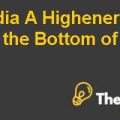
Banco Itau
Introduction
There was a time when people used barter system. They did not have a concept of money. They used to exchange goods for other goods. People used to exchange goods that they needed, but the time changed, which result in the evolution of money.
Initially coins were introduced; these were made of gold, silver and other metals. There was a chance of theft. There was a need of an institution that could keep that money. An institution was found that kept people’s money and issued certificates. With the passage of time, paper money was introduced. It was quite difficult for people to keep large amount of paper money. It was difficult for people to carry money along with them.
Various institutions were founded that started to provide their financial services. People, who had idle money, deposited their money into the banks. Banks took advantage of the cash inflow, they started to lend their money to those who did not have enough money. Industries and different service sectors started to get money from banks on a predetermined interest rate.
These banks were not formalized. There was a need of check and balance. These banks were not regulated by any government body. To resolve that issue, the concept of central bank was introduced. Central bank is considered as the bank of banks. Every country has its own central bank. Central bank has its eyes on all commercial banks. All commercial banks are supposed to follow the rules and regulation issued by the central bank. In bad times it is the central bank that supports commercial banks.
About Banco Itau
Banco Itau was formed as a result of merger in 1964. In 1974, Banco Itau had become the second largest bank in Brazil with the help of mergers, acquisitions, investments, etc. Banco Itau was not only a commercial bank but it was an investment bank too. It was a public limited company and its stock was traded on Sao Paulo and Rio de Janerio stock exchange.
Banco Itau had many services to offer like commercial banking, export and import financing, leasing, consumer credit, real estate financing, foreign exchange operation, fund management, brokerage and underwriting. Banco Itau had clear vision to grow. It was decided to open a branch in Portugal and Argentina.
Banco Itau had state of the art technology to check the creditworthiness. It was found that Banco Itau’s 41% income was generated from float activities while 28% revenues came from credit operations.
Brazil Economy
Brazil is the largest country in Latin America and fifth largest in the world. Brazil has around 3.2 million square miles of land and it covers 60% of the South American land. Brazil had 26 states and each state is economically independent. It has a population of around 150 million and there are two large cities in Brazil. These cities are Sao Paulo and Rio de Janeiro. These two cities had population of around 11 million. There was an increasing trend in population growth. Population was increasing at the rate of 2% per year and it was projected that total population would be 170 million by 2000.
Brazil was basically an agricultural country. Agricultural products were its exports. 30 years before, Brazil decided to move from agricultural to industrial economy. It was not easy for Brazil to do so. Brazil started to produce those products that can be the substitute of import products. To support its development strategy, there was a need of finance. Brazil’s government decided to borrow funds from international banks. International banks provided the funds. Role of public sector was enhanced. It was necessary to announce intensives for public sectors in terms of tax, subsidies etc. Brazil was relying on oil imports. It had a negative impact on Brazil’s economy.
Brazil’s economy was faced a worst condition when oil prices increased. It was a nightmare for the Brazilian economy. Brazil was importing oil from the world. It had a negative impact on balance of payments. Another nightmare was an increase in interest payment. It also had a negative impact on the Brazilian economy. Brazil borrowed money from international banks. Increase in interest rate meant that expenses increased as well. Brazil did not stop to borrow funds until 1982.There was a huge pressure of external debt on Brazil. There were two countries that had the highest debt and Brazil was one of them. Brazil was supposed to pay $100 billion to more than hundred international banks. Brazil was supposed to pay the principle amount as well the amount of interest. Due to its high external debt, Brazil was declared as a default country. It was supposed to support its budget deficit. Government was out of money.
Brazilian Banking System
Banks in Brazil were profitable and were large in size. It was $400 billion industry and was the largest one in Latin America. Two-thirds of the .....................
This is just a sample partial case solution. Please place the order on the website to order your own originally done case solution.











